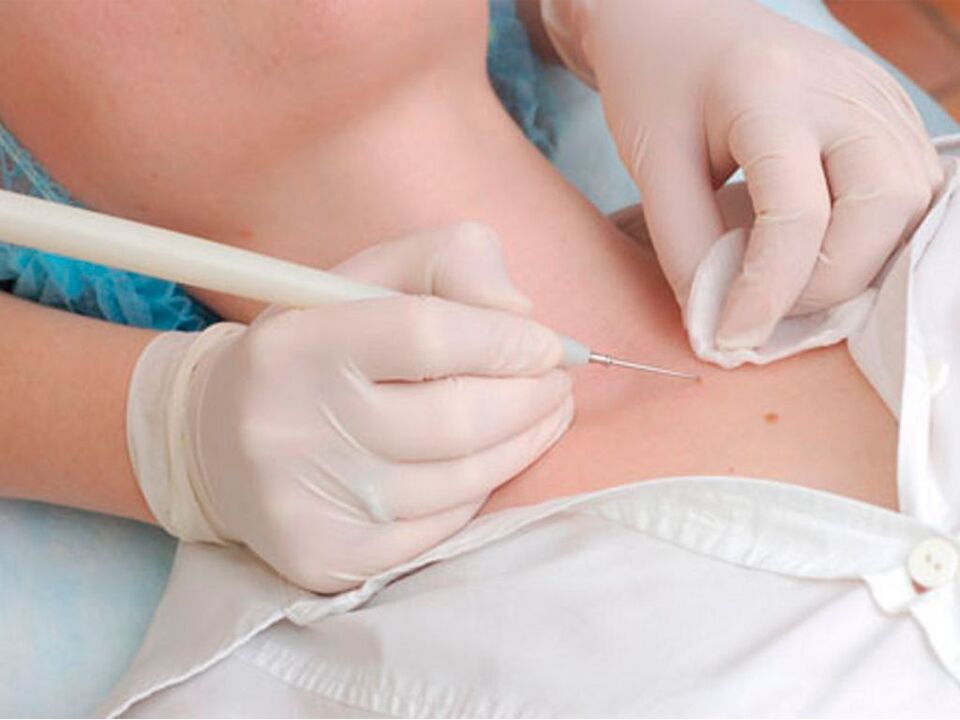
Papillomas are called skin and mucous membranes. However, some strains cause tissue damage. That is why experts recommend timely removal of papillomas. This prevents the development of malignant tumors, including cervical cancer in women.
Papillomatous plants are caused by the ingestion of human papillomavirus (HPV) on the skin and mucous membranes, which can go unnoticed for a long time. Impaired immunity, tissue damage, and chronic transport lead to cell hyperplasia. HPV begins to multiply actively, causing papillomas or warts on the skin or gonads (in the mucous membranes of the genitals).
Predictive factors
The following factors contribute to the active growth of papillomas:
- frequent change of sexual partners, transmission of sexually transmitted diseases;
- household with people with warts, condyloma or papilloma;
- damage to the skin and mucous membranes;
- deterioration of immunity.
HPV is inactive in 80% of sexually mature people. The virus does not cause the growth of neoplasms for 6-8 months after contact with the virus carrier. Genital warts and papillomas, in particular, appear in the first weeks after close contact with an infected person.
Why papillomas should be removed
Papillomavirus poses a serious health risk. Strains with high oncogenic risk are especially dangerous: 16, 18, 30, 31-35, 56-59, 67-68. When papillomatous plants appear, it is necessary to consult a dermatologist or venereologist. The doctor will perform an external examination and order a PCR diagnosis, which will determine the DNA of the virus and the degree of oncogenicity of a particular strain.
The specialist also selects the most effective surgical techniques. Only a doctor who has the results of the examination can tell exactly how to remove papillomas with the least risk to health. It is not recommended to leave such neoplasms. Under the influence of adverse factors, they can cause inflammation, bleeding, and benign or malignant tissue hyperplasia.
An important!Papillomas should be removed in intimate areas - this is where high-risk tumors appear.
If papillomatous growth is found in the external genitalia (vulva, perineal area, circumcision), it is necessary to consult a venereologist. In addition, it is necessary to undergo tests prescribed by a doctor, the purpose of which is not only to determine the type of HPV, but also to identify the accompanying urogenital infection.
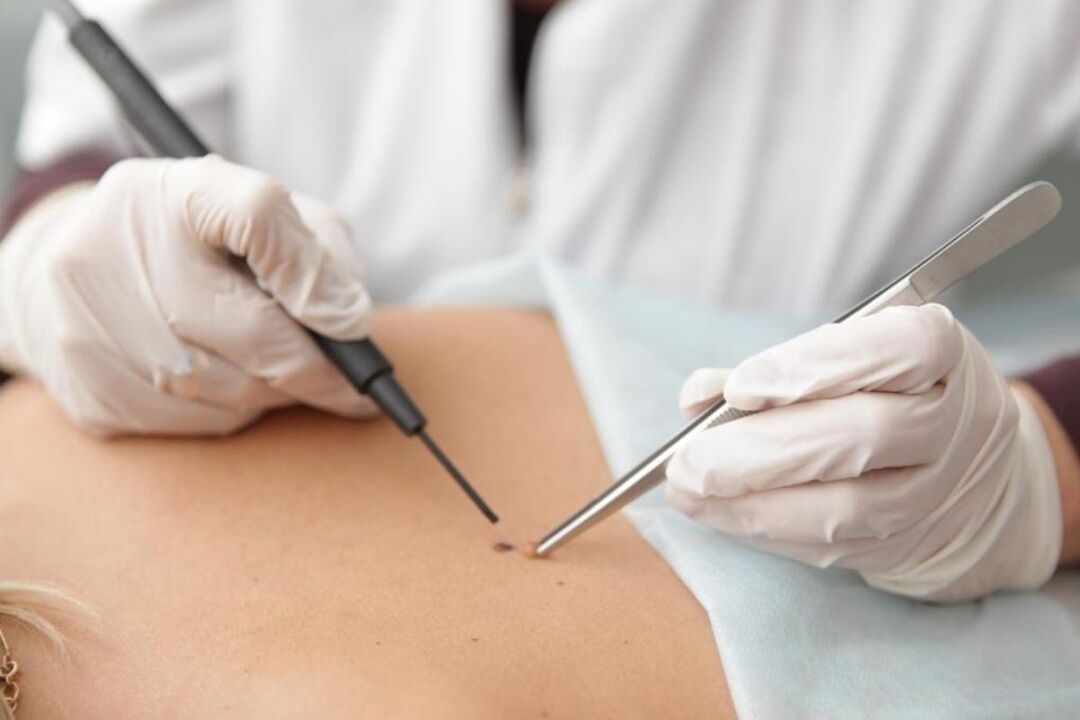
Surgical treatment of papillomas
The main methods of surgical treatment of papillomas:
- use of special local remedies to eliminate papillomas at home;
- cryodestruction (removal of papillomas with liquid nitrogen);
- laser coagulation (laser removal of papillomas);
- radiofrequency ablation of papillomas;
- Remove formations with a scalpel.
Either of these methods can eliminate papillomas. The specialist will help you choose the appropriate option, taking into account the location of the neoplasm, the number of papillomatous growths and diagnostic data. Before removing papillomas, the doctor should make sure that there is no malignant process. When the risk of oncogenicity is high, experts prefer the classic method of removing papillomas - scalpel and neoplasm removal.
The main indications for the removal of papillomas:
- desire to get rid of cosmetic defects in the form of one or more papillomatous growths on the skin and mucous membranes;
- Frequent damage to the neoplasms of the folds under the armpits, neck, groin, bleeding and inflammation, leading to a risk of tissue damage;
- detection of secondary and upper oncogenic papillomas;
- presence among relatives of people with cancer;
- The location of papillomas is the genitals and internal genitals.
The ideal time to remove papillomas
Before removing papillomas from the body and face, the doctor warns the patient about possible complications, including the appearance of young spots. The risk of pigmentation is higher in spring and summer. Many people are interested in the question of whether papillomas can be removed in the summer. If the formations are located on exposed areas of the body or on the face, the operation is performed in the cold period, when the probability of secondary infection and pigmentation is low (UV activity decreases in the autumn-winter period).
An important!Removal of the neoplasm alone is not enough - it is not possible to stop the growth of the papillomavirus. Surgical procedures must be combined with therapeutic methods.
It is impossible to get rid of HPV completely - only a small part of the virus remains in the body. However, in combination with antiviral agents, surgical techniques give the highest therapeutic results.

Laser removal of papillomas
Laser removal of papillomas is a modern method of surgical treatment of HPV. Specialists often use a laser system for carbon dioxide. After the procedure, there are no scars or defects on the skin. The high cost of laser papilloma removal is due to the effectiveness of the method. The final cost depends on the size and number of injuries. The doctor can perform up to 5-20 lasers of average shape at a time. After examination and consultation, the specialist will give you detailed recommendations on how much it costs to remove papillomas. In addition, antiviral treatment is mandatory. Medications are also chosen by the doctor.
Lasers can be used to remove papillomas from anywhere on the body, including the genitals. This method is bloodless and unconnected. The laser has an anti-inflammatory effect on tissues, seals blood vessels and prevents bleeding. Papillomas usually appear on the hands (warts) and neck - in the form of fibrous plants that are easily damaged during hygienic procedures. Such neoplasms have a low oncogenic risk, but it is better to get rid of them.
Features of laser removal of papillomas
Before the procedure, consult a dermatologist. The doctor examines the skin and identifies possible contraindications:
- tissue damage;
- local inflammation of the skin and mucous membranes;
- pregnancy;
- exacerbation of various infectious processes;
- herpes
Laser removal of papillomas uses semiconductor lasers, which evaporate viral neoplasms and at the same time clot the blood vessels. After the papillomamate plant is damaged, a protective membrane forms on the skin. He resigns on his own a week after his removal. After 2 months of the procedure, the skin color is completely smoothed. The location of papillomas is no different from adjacent tissues.
Skin care
Scabies that occurs after laser removal of the papilloma should be protected from sunlight, water and cosmetics. Forcible removal of soil is prohibited - it can lead to wound infection, rough scars and increase the healing time of tissues.
After the itching has subsided, it is recommended to lubricate the skin with a sunscreen before going outside. This prevents the formation of young spots. There is no need to wear sunscreen in winter.
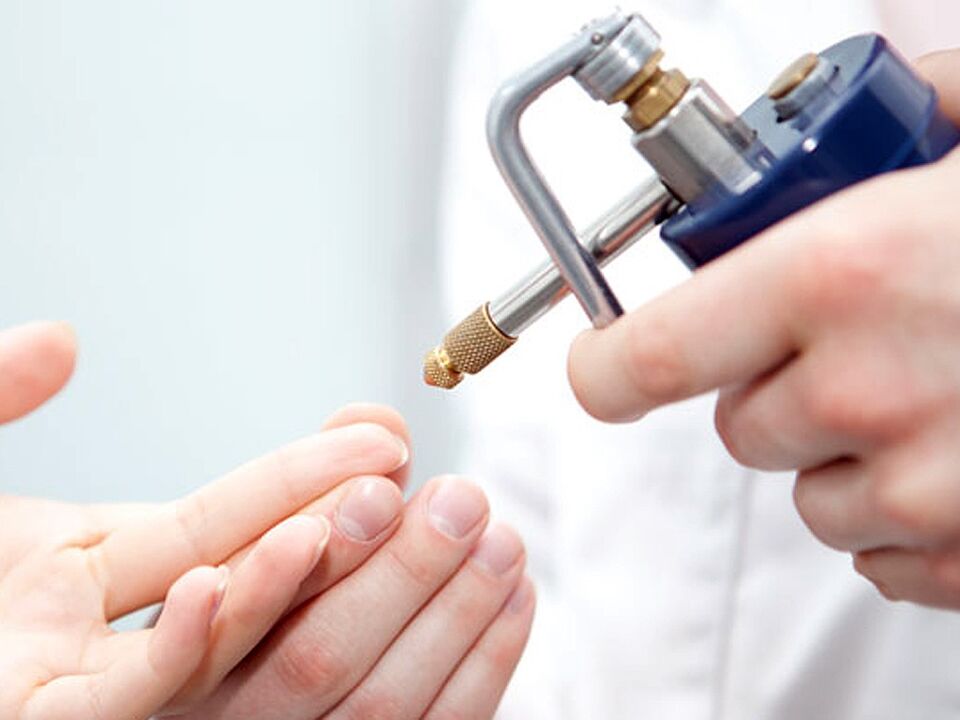
Nitrogen removal of papillomas
Nitrogen destruction of papillomas involves freezing of neoplasms (cryodestruction). The method is effective for single papillomatous plants on the skin. A serious disadvantage of cryodestruction is the inability to control the depth of tissue freezing. Therefore, it is very important to be responsible in choosing the clinic where papillomas should be removed. The doctor must have permission to perform surgery.
Very low temperatures stop the metabolic processes in the cells of the neoplasm and cause their death. The resulting papilloma is replaced by a necrotic area that is gradually replaced by healthy tissue. Cryodestruction is available for most patients. The procedure is much cheaper than other methods (laser coagulation, radiofrequency ablation of neoplasms).
Papillomas can be removed both for aesthetic reasons and in the presence of specific indications. Of particular concern are neoplasms that grow rapidly during hygienic procedures, change their shade and shape, become inflamed and injured.
Features of cryodestruction
Before removing papillomas with liquid nitrogen, the doctor carefully examines the skin, assesses the general state of health and identifies possible contraindications:
- acute infectious processes;
- decompensated stage of somatic diseases;
- exacerbation of skin diseases;
- herpes;
- tissue damage at the site of the neoplasm;
- pregnancy.
Nitrogen removal of papillomas is performed without anesthesia. The cryodestructor applicator is held over the neoplasm for 1-2 minutes. The skin becomes white and cold and temporarily loses its sensitivity. There is a slight tremor during the procedure and a burning sensation may occur. Within a few hours after the procedure, the skin becomes swollen and red, and within 24 hours after cryodestruction, vesicular elements appear in the cleansed area, including the presence of serous fluid.
Tissue cryonecrosis lasts up to a month, after which the dead areas of the neoplasm are removed and replaced by invisible spots, which disappear completely after 3-5 months after the application of liquid nitrogen.
Skin care
In the first weeks after cryodestruction, papillomas are recommended to protect the skin from moisture, sunlight and other adverse factors. If severe inflammation occurs, consult a physician. Normally, tissues heal on their own, but with low epithelialization, your doctor may recommend cosmetics that accelerate the regeneration of damaged skin.
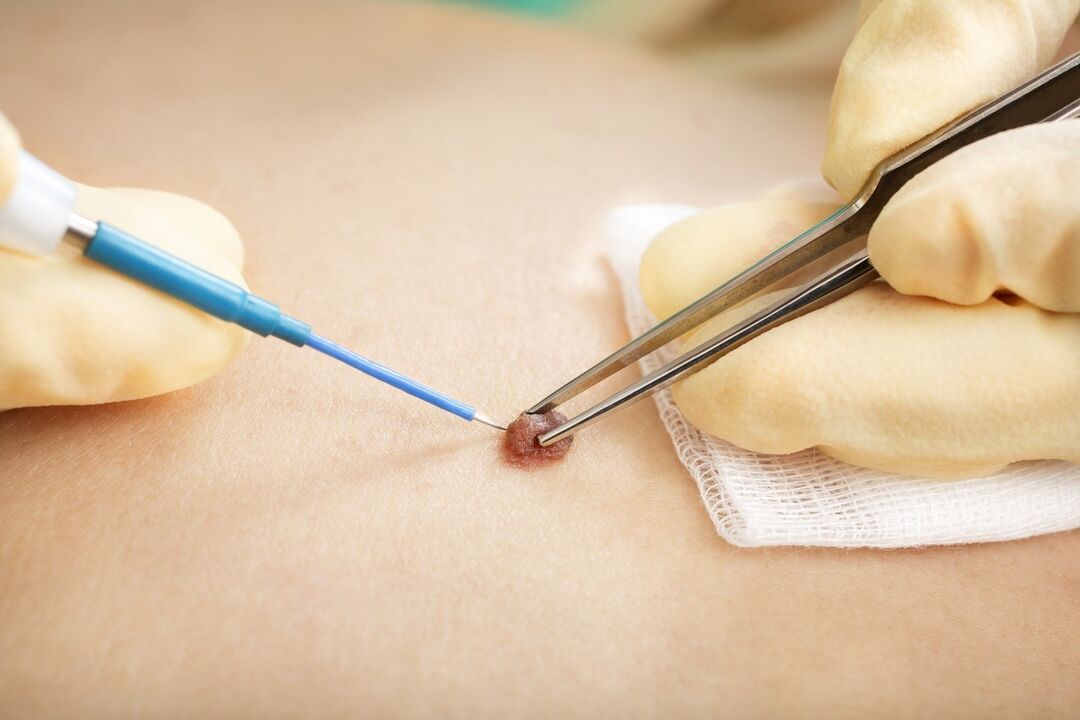
Removal of papillomas by electrocoagulation
Electrocoagulation of papillomas involves the destruction of skin growth by electricity. This method is very traumatic, but its cost is affordable. The high-frequency current coagulates the proteins of the neoplasm and causes tissue rejection.
Features of the procedure
Prior to electrocoagulation, a specialist may prescribe dermatoscopy, PCR, and other laboratory diagnostic methods. The doctor will review and determine possible contraindications:
- exacerbation of herpes infection and various inflammatory processes;
- pregnancy;
- suspicion of the harmful nature of papillomas;
- skin hypersensitivity, allergic reaction to electricity;
- exacerbation of somatic diseases in particular, especially in the decompensation stage.
Skin care
Electrocoagulation of papillomas does not require comprehensive skin care. Preventive factors that contribute to inflammation and secondary infection should be avoided. In the first few weeks, the scab is removed, and then the skin is completely cleansed and replaced with new cells. Avoid direct sunlight during this period. The doctor may recommend treatment with a weak solution of potassium permanganate.
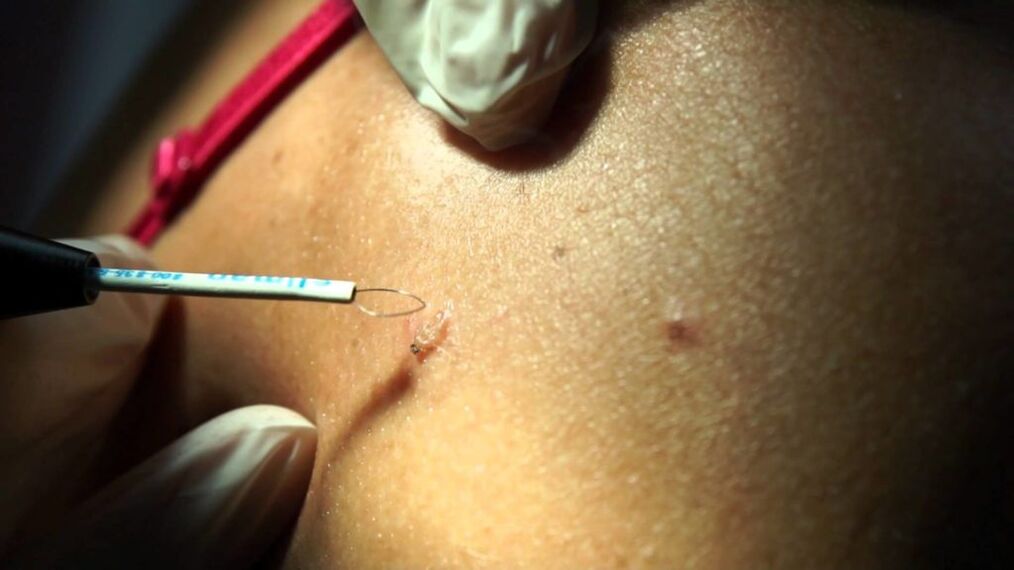
Radiofrequency ablation of papillomas
Radiofrequency ablation of papillomas is accompanied by atraumatic incision and coagulation of neoplasmic tissues. Radio waves provide a very precise effect, but they do not damage healthy tissue and prevent the spread of HPV through the blood. Radiosurgery devices used in modern clinics are safe and reduce the risk of various complications.
Features of the procedure
Preliminary diagnosis allows you to determine the size of the virus in the body, the type of papillomavirus and the degree of oncogenic risk. When choosing a method of treatment, the doctor takes into account the general state of health and identifies possible contraindications:
- pregnancy, menstrual cramps;
- exacerbation of various infectious and inflammatory processes and somatic diseases;
- presence of malignant tumors;
- exacerbation of herpes infection;
- Damage to the skin where the radio waves come in contact with the device.
High-frequency energy cuts through the skin and coagulates blood vessels and papilloma tissue. In this case, the electrode does not come into direct contact with the tissues, which protects it from painful sensations and muscle spasms. Unlike electrocoagulation, the use of radio waves can reduce the duration of thermal exposure and reduce necrosis of the treated areas.
Skin care
The procedure is performed under local anesthesia. Removal of papillomas takes 15-30 minutes. The treated tissue is replaced by a single point of rejection within a week, leaving no rough scars or other defects. It is recommended to limit contact with water and ultraviolet rays during the recovery period, do not use cosmetics and household chemicals.
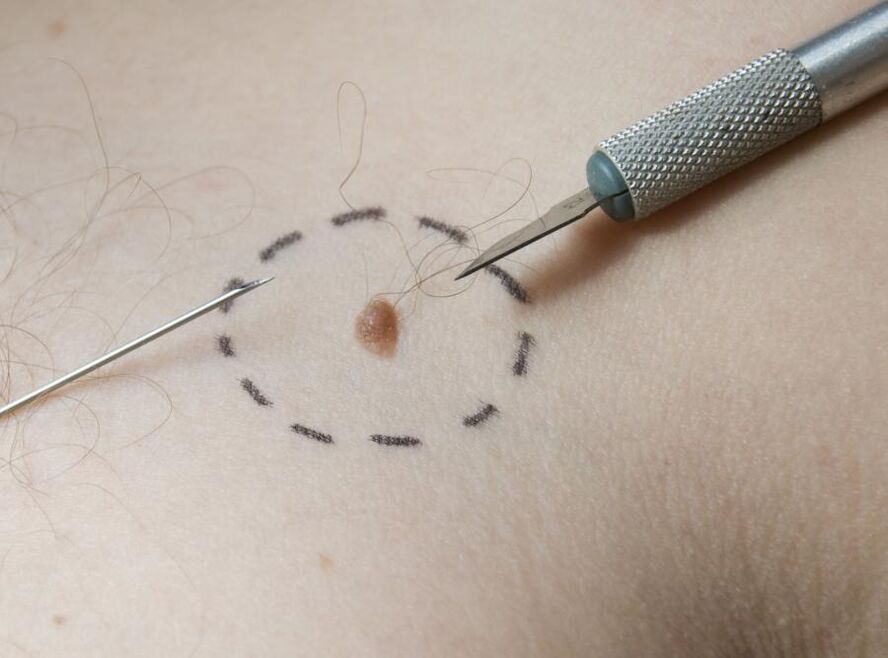
Surgical removal with a scalpel
Scalpel removal of papillomas is rarely used during classical surgery, especially when there are signs of malignant neoplasms. In this case, the surgeon removes the papillomatous plant by invading healthy skin.
This method is traumatic, leaving scars and blemishes. If desired, they can be removed through acid peels, including lasers and other cosmetic procedures. Specialists try not to apply papillomas to exposed areas of the body and face.
Means to eliminate papillomas
Drugs that remove papillomas and warts do the same: they contain substances that can damage neoplastic cells in the future with the formation of small scabs. In the case of secondary infections, acute inflammatory reactions, the use of modern drugs with a low risk of complications in spots and scars is recommended. It is also possible to use cryopreparations that replace standard cryodestruction.
Removal of papillomas at home, especially with large tumors, is very dangerous. It is a good idea to contact a specialist who will be able to select the best treatment options, including antiviral therapy, to prevent the recurrence of human papillomavirus infection in the future. The professional will tell you exactly how to remove papillomas at home and whether it is worth doing. Topical preparations for skin growth are used for small tumors.
Since it is not always possible to remove papillomas with the help of pharmaceutical products, it is still recommended to consult a dermatologist. For small neoplasms, your doctor may prescribe proven drugs that can kill papillomatous plants. In addition, the use of antiviral drugs is recommended. An integrated approach increases the effectiveness of the entire treatment process. Antiviral drugs can be given only when the papillomas are alone and not close to proliferation and malignancy.
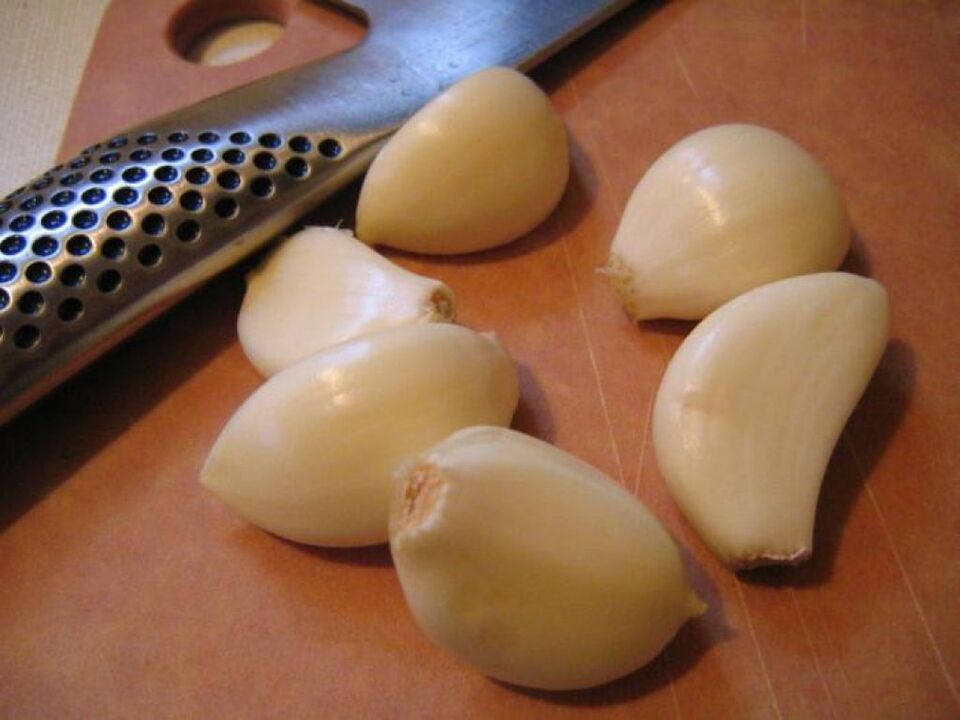
Removal of papillomas by folk methods
Removal of papillomas at home with folk remedies is popular. Society does not take the papillomavirus seriously. Many are unaware that papillomas can be dangerous. Since it is almost impossible to remove papillomas at home without endangering health, it is recommended to consult a dermatologist first. Using modern diagnostic methods, the doctor can assess the nature of the neoplasm and choose an effective treatment regimen.
General methods of removing papillomas at home
You can get rid of papilloma at home with the following tools:
- celandine juice;
- garlic;
- green walnut juice;
- salicylic acid.
An important!The methods listed will eliminate the growth on the skin. The use of such products on mucous membranes is strictly prohibited, as there is a high risk of acute inflammatory reactions and chemical burns.
Celandine juice is often used to kill papillomas. These skin affected areas are treated several times a day. In this case, celandine should not be used on healthy tissues. To prevent burns, it is recommended to treat undamaged skin with vegetable oil or zinc oil before applying the juice.
Garlic has a disinfectant effect, long-term use helps to remove warts and papillomas. However, this method is not suitable for people with sensitive skin. Garlic often causes an inflammatory reaction, burning sensation and redness.
Salicylic acid promotes the destruction of skin growth caused by the active reproduction of the papillomavirus. This remedy is usually included in the preparation to get rid of papilloma and warts. Salicylic acid is administered acutely several times a day until the neoplasm is completely dead.
Green walnut juice brightens the skin. The remedy must be used for a long time to achieve the healing of the papilloma. Processed fabrics have a dark brown color, the skin may peel and dry out.














































































